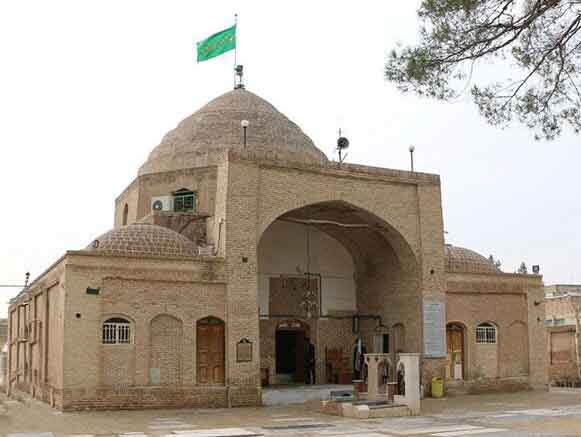Restoration of wooden doors at 14th-century Varamin mosque begins

TEHRAN - The restoration of the wooden doors of the Jameh Mosque of Varamin has officially commenced, marking a significant step in the extensive renovation of the 14th-century place of worship.
According to reports from the Cultural Heritage, Tourism, and Handicrafts Department of Varamin, the restoration project is now entering a new phase with the establishment of a technical and operational workshop for the preservation work.
On Friday, Mohammadreza Tajik, head of the department, emphasized the importance of this national heritage site. “This initiative is part of a comprehensive restoration plan for the Jameh Mosque of Varamin,” he stated.
Tajik noted that the first phase of the restoration involved cleaning and reinforcing the tiles and inscriptions on the mosque’s southern portico. The second phase, which focuses on the wooden doors on the northern and eastern sides of the mosque, has officially begun. With dedicated efforts from the contractors, the restoration is expected to be completed within ten days.
The Jameh Mosque, a significant religious and historical landmark, is listed among Iran’s national heritage sites, underscoring the importance of its preservation for future generations.
According to the official, the Jameh Mosque of Varamin is an example of a four-iwan mosque, featuring an inscription dated 722 AH (1322-23 CE). Its construction began under the order of Sultan Muhammad Khodabandeh (Oljeitu) and was completed during the reign of Sultan Abu Sa’id Bahadur Khan, the last ruler of the Ilkhanid dynasty, a division of the Mongol Empire that encompassed the present-day countries of Iran, Azerbaijan, Georgia, and Armenia, as well as parts of Iraq, Turkey, Afghanistan, and Pakistan.
“The mosque showcases exquisite craftsmanship in brickwork, tilework, stucco with Islamic designs, and calligraphic inscriptions, reflecting the highest levels of artistry and beauty.”
The terms “Jameh Mosque”, “Masjed-e Jameh” and “Friday Mosque” are used in Iran for a grand communal mosque where mandatory Friday prayers are performed: the phrase is used in other Muslim countries but only in Iran does it designate this purpose.
Until 1220s, Varamin was an agricultural center of Ray, which is now situated in southeast of mother Tehran.
The raiding of Ray by the invading Mongols caused a flux of migration and economic growth during the subsequent Ilkhanid rule. Thus, Varamin developed into an urban center.
A Vizier of Ilkhanid Abu Sa’id, named Yusuf Quhadhi built the Jameh Mosque of Varamin. Other significant monuments from this era, include mausoleum of Imamzadeh Yahya, Aladdin Tower, Imamzadeh Shah Husayn, and Sharif mosque.
At the turn of 14th century, Varamin started to decline due to Timurid Empire armies’ invasions.
Varamin is located in the southeast of Tehran province in an even plain at a height of 918 meters above sea level.
AM
